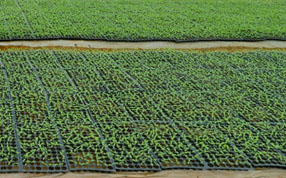CULTIVATION PRACTICES

Seed rate: Depending on the variety 1 to 1.25 kg of seeds are required for sowing one hectare of land.
Irrigation:
Irrigation is given after transplanting.
About four to five weeks after transplanting top
dressing fertilizer on the sides of ridges and
earthing up is done to bring plants to the middle of
the ridge. Frequency of irrigation depends on soil
type and season, and normally done once in 8-10 days
during winter and
4-5 days interval during summer. Excess
irrigation during flowering stage to be avoided to
reduce flower dropping. During rainy season yields
can be substantially increased by providing
supplementary irrigations whenever the dry spell
exceeds one week period. The most critical stages of
moisture stress are initial establishment stage and
pre-blooming and fruit development stage.
Weeding: Two to three hand weeding
are essential. Among the herbicides recommended
diphenamid, EPTC, nitrogen and alachlor are
extensively used for controlling weeds in chilli
crop. Pre plant incorporation (10 days before
planting) of EPTC at 3.75 kg/ ha followed by
application of either nitrogen at 1-2 kg a.i./ ha or
alachlor at 2.5 kg a.i./ ha or Diphenamid around 4.8
kg/ ha as pre-emergence sprays give good control
weeds in chilli plants.
Pinching: As bell
varieties grown in
Harvesting and yield:
The crop starts yielding green chillies 2 months
after transplanting and dry chillies 90 days after
transplanting. The crop lasts for 5-6 months after
transplanting depending upon duration of the
variety.


